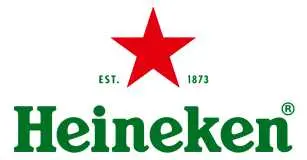The term "feeding systems" describes automated equipment used to feed animals. It feeds a number of animals rapidly and makes sure that each one gets their fair share of the meal. It encourages more animals to eat from the feeders at the same time, boosts productivity, and shortens operational time, all of which lead to improved consistency and efficiency.
Global Feeding Systems Market Driving Factors and Challenges
The rising number of cattle on farms is driving the market CAGR for feeding systems. In response to the steadily rising demand for meat and dairy products, farmers have increased the number of cattle on their farms. The demand for cow fodder has increased as a result. Farmers ensure that livestock feed is utilised effectively to reduce waste and increase profitability. They need intricate automated feeding system models as a result. The growing number of cows on farms will therefore fuel the global market for automated feeding systems during the course of the forecast period. The agriculture sector's increasing focus on sustainability and animal welfare is a significant additional factor. People are becoming more aware of the effects their food choices have on the environment, which has increased the demand for food products that are produced sustainably and come from ethical sources. Automated feeding systems, which offer a more compassionate and environmentally friendly way of raising livestock, can help farmers satisfy these goals.
However, despite all of the benefits, the market for feeding systems still faces challenges. These devices communicate with each other using a variety of interfaces, technologies, and protocols. Lack of standardisation of multiple communication interfaces and protocols may result in data deception. System integration is difficult due to technology non-standardization, which also limits plug-and-play capability between unrelated systems. For instance, the fact that the majority of equipment manufacturers use their own interface protocols affects the connectivity between devices created by diverse equipment manufacturers. Software and system developers must also solve the issue of access to information about dairy farms. The absence of this essential information results in the devices' lack of standardisation and interoperability metrics. However, the exchange of vital inputs has improved and is projected to keep improving as large-scale producers work to maximise efficiency.
Impact of COVID-19 on Global Feeding Systems Market
Since the start of the COVID-19 epidemic, the global economy has experienced a number of unanticipated shocks that have caused countless enterprises to file for bankruptcy and caused a major drop in income. This unprecedented global health issue has had an impact on almost every industry, and it is feared that long-term effects will prevent future industry growth. There are no exclusions in the food supply chain or the agricultural industry. An in-depth analysis of the food supply chain reveals that firms' operations and the delivery of a variety of food goods have come to a standstill due to constrained demand, the closure of food manufacturing facilities, and financial difficulties.
Feeding Systems Market Key Players:
The market study provides market data by competitive landscape, revenue analysis, market segments and detailed analysis of key market players such as; Afimilk Ltd., BouMatic, CTB, Inc., Dairymaster, DeLaval, GEA Group Aktiengesellschaft, HETWIN Automation System GmbH, JH AGRO A/S, Maskinfabrikken Cormall A/S, Pellon Group Oy, Rovibec Agrisolutions, ScaleAQ, Trioliet B.V., VDL Agrotech, Others.
Global Feeding Systems Market Segmentation:
By Type: Based on the Type, Global Feeding Systems Market is segmented as; Conveyor Feeding Systems (Belt Feeding Systems, Chain Feeding Systems, Pan Feeding Systems), Rail-Guided Feeding Systems, Self-Propelled Feeding Systems.
By Livestock: Based on the Livestock, Global Feeding Systems Market is segmented as; Ruminant, Poultry, Swine, Other Livestocks.
By Offering: Based on the Offering, Global Feeding Systems Market is segmented as; Hardware, Software, Services.
By Technology: Based on the Technology, Global Feeding Systems Market is segmented as; Manual, Automated, Robotic and Telemetry, RFID Technology, Guidance and Remote-sensing Technology, Others.
By Function: Based on the Function, Global Feeding Systems Market is segmented as; Controlling, Mixing, Filling and Screening, Others Functions.
By Region: This research also includes data for North America, Asia-Pacific, Latin America, Middle East & Africa and Europe.
This study also encompasses various drivers and restraining factors of this market for the forecast period. Various growth opportunities are also discussed in the report.






















